|
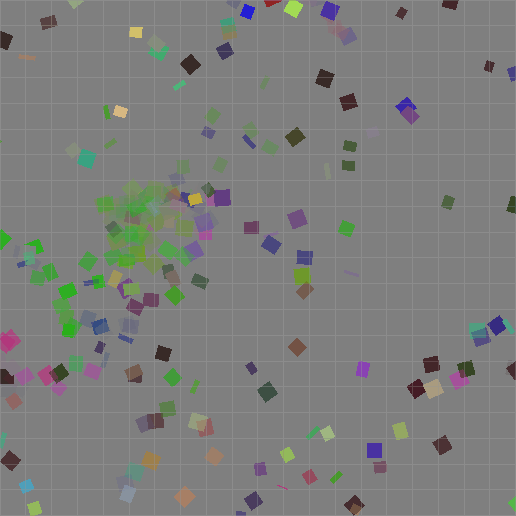 |
|
 |
Generative electronic art
A computational process acting (somewhat) outside the control of the artist constitutes the artwork or is responsible for its production.
Virtual ecosystem
A system of interacting computational processes (possibly undergoing artificial evolution) which depend for their execution on the execution of the other component processes of the system.
Desirable attributes of generative art
1. Demonstration of complex dynamics over fine and coarse time-scales
2. Explores large aesthetic spaces independently of human input
3. Has potential for human input to influence its behaviour
4. Has potential for artist-laid constraint of the aesthetic space
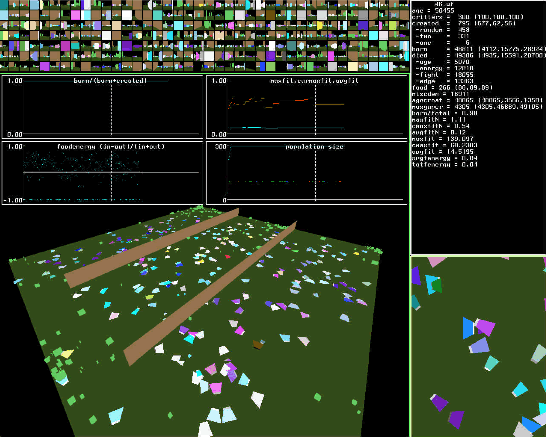 |
Polyworld : Yaeger 1994
Agents roam a planar surface. Agents can see their environment. Agents can mate with coincident agents, as well as fight and eat one another or flee from predatory agents. |
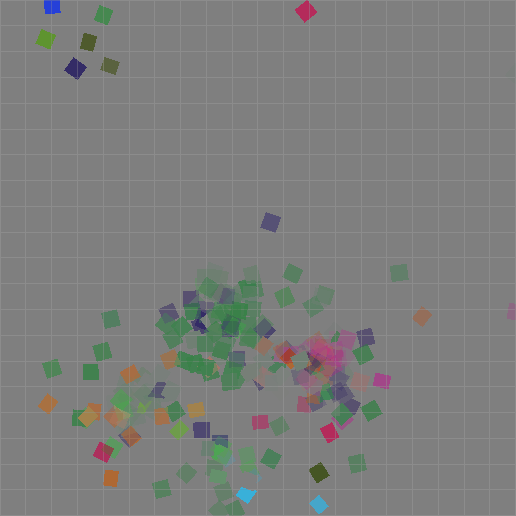 |
Autumn Squares : Dorin 2000
Agents roam a flat world. The agents obtain energy according to their surface area. Agents may mate with attractive, coincident agents & flee from unattractive agents. Humans cannot interfere with the agents. Primary outcome : evolving field of shifting density and colour. |
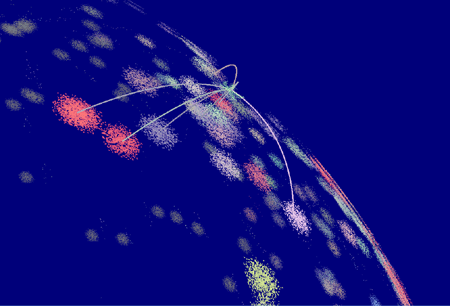 |
Listening Sky : Berry, Dorin, Rungsarityotin 2001 Agents roam a spherical surface. Agents have likes/dislikes, size, mass, velocity and play or seek music according to their own tastes. Agents may mate with attractive (musical), coincident agents & flee from unattractive musical agents. Humans navigate a "listener" in the sky to eavesdrop on the agents' musical outbursts. Primary outcome : evolving, navigable musical world. |
 |
Eden : McCormack
2001
Agents roam a grid world. The grid also contains obstacles and energy. Agents may sing aloud to signal events. Agents may listen to and react to sounds in their environment. Agents may mate with coincident agents. |
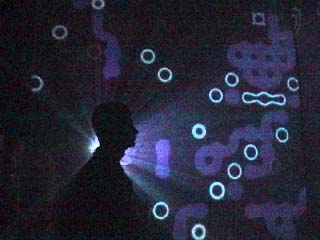 |
Humans indirectly effect the abundance of energy on the grid and parameters of the evolutionary algorithm. Primary outcome : evolving audio space in a patterned visual world. |
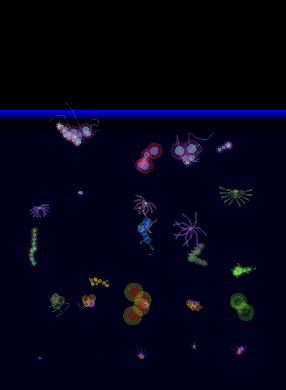 |
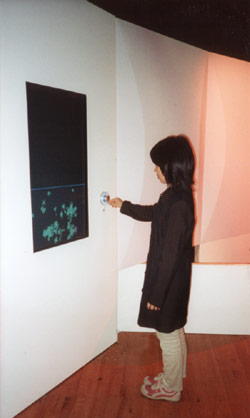 |
Meniscus : Dorin 2003
Population generated from two parents chosen from a database of aesthetically pre-bred agents. Agents have likes/dislikes, preferred levels beneath the water surface & water agitation, size, shape, behaviour. Agents may mate with attractive coincident agents. Humans control water level & agitation and may initiate a new population. Primary outcome : evolving, intricate visual field |
The audience : huh?
The artist : can I make my mark on the process?
Cellular automata :: Conway's Game of Life & LiquiPrism
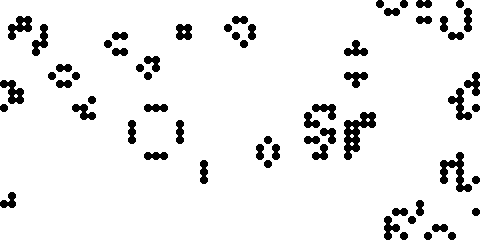 |
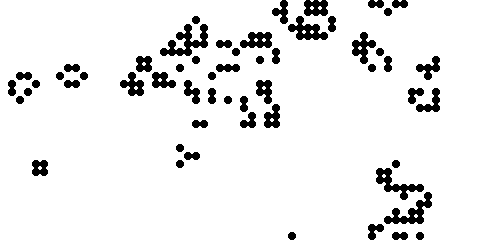 |
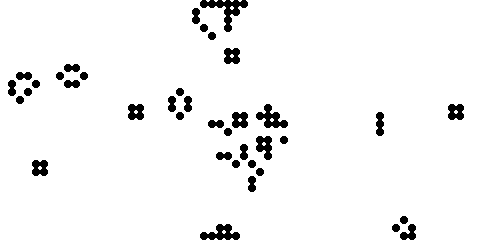 |
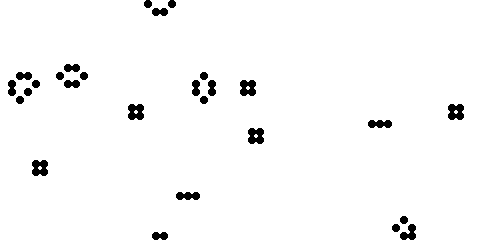 |
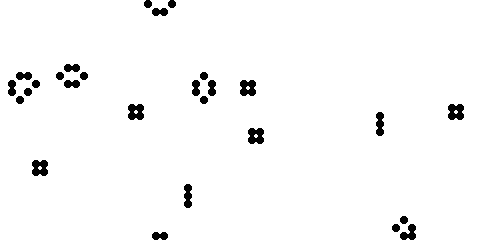 |
||
| phase | initiate/random |
settle |
cycle |
|||
| novelty | too
high |
high |
too
low |
|||
| control of novelty | low | too low (interesting CA rules are brittle and exceedingly difficult to locate) | ||||
1. Demonstration of complex dynamics over fine (YES) and coarse (NO) time-scales. (Demon CA better than Life?)
2. Explores large aesthetic spaces independently of human input (NO - not without added interpretation of cell states)
3. Has potential for user-events to influence its behaviour (YES - has a "nice" hook for incorporating user input)
4. Has potential for artist-laid constraints on the aesthetic space (PERHAPS - with added interpretation of cell states)
Evolutionary algorithms :: Autumn Squares & Meniscus
| phase | initiate/random | settle | drift | |||
| novelty | too
high |
high |
moderate |
|||
| control of novelty | low | moderate (behaviour of the system is orchestrated to some extent by the programmer) | ||||
| phase | initiate/random |
initiate/controlled |
settle |
drift |
||
| novelty | too
high |
high |
moderate |
|||
| control of novelty | low | high (appearance of system, creature morphology and behaviour is orchestrated by the programmer) | ||||
1. Demonstration of complex dynamics over fine (YES) and coarse (YES) time-scales
2. Explores large aesthetic spaces independently of human input (YES)
3. Has potential for user-events to influence its behaviour (YES - engineer new agents or alter their environment)
4. Has potential for artist-laid constraint of the aesthetic space (YES)
...of course these tables are incomplete, inaccurate, (not quite useless) approximations of the "truth".
Audiences need to be educated before they can do more than just "admire the pretty pictures".
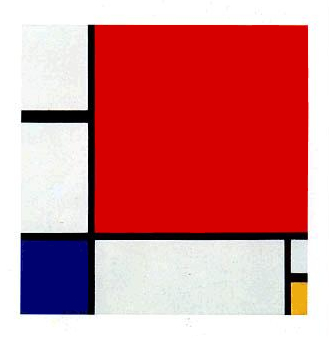 |
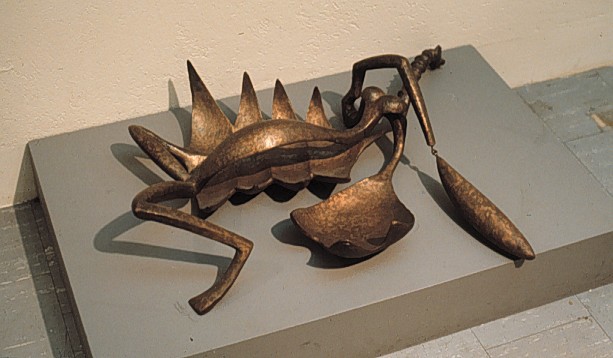 |
 |
| A Mondrian, | a Giacometti, | a Miro. |
Temporal works require time of their audience.
 |
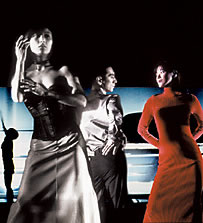 |
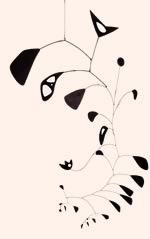 |
 |
A
Stravinsky score, |
a
Dumbtype performance, |
a
Calder mobile, |
Alan's Meniscus. |
Interaction is a double-edged sword:
1. It may detract from an audience's thorough investigation of a system since:
the audience become "users";
users are happy to click without investing any effort in trying to understand a work;
users may walk away when they don't "get it" in as little as one or two clicks;
users are forced to understand how the control works and what it does.
2. It may assist an audience to understand a system in action:
an audience may be encouraged to explore the possibilities a work offers by engaging with the process as it unfolds.
Should a work be intuitive and easy to understand?
For some viewers, and some artists, in some circumstances, maybe.
Should a work be complex and deep so that there is something to understand?
I think so.